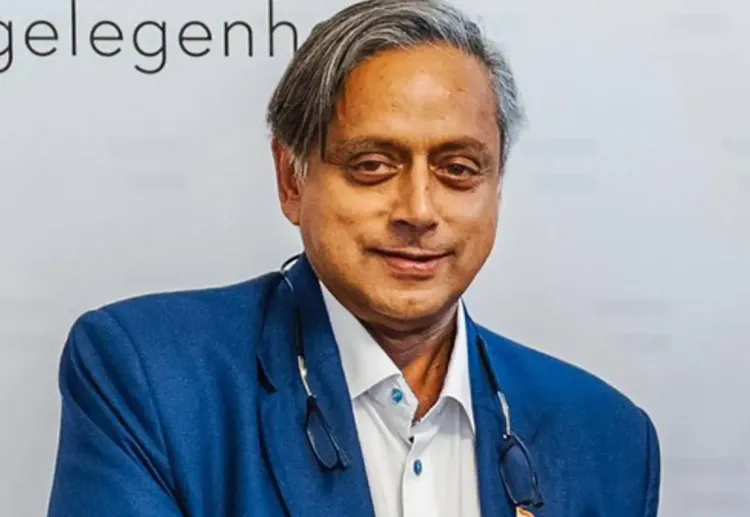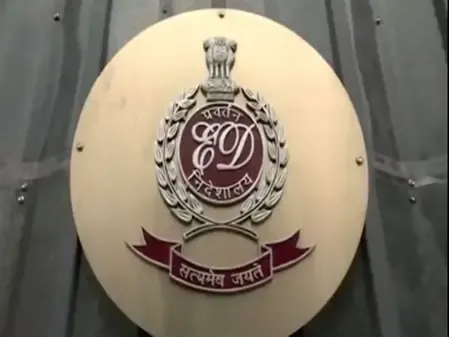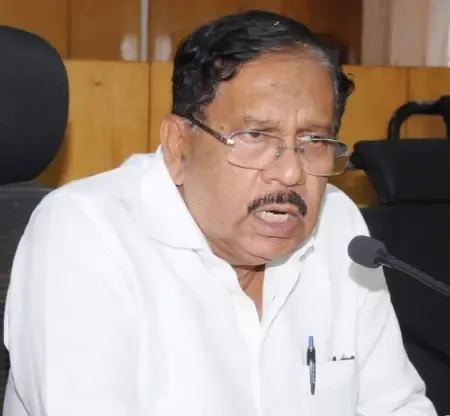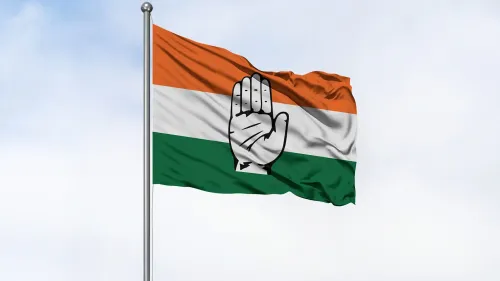Did Shashi Tharoor Praise BAPS Hindu Mandir in Abu Dhabi and PM Modi's Efforts?

Synopsis
Key Takeaways
- Shashi Tharoor praised the BAPS Hindu Mandir as a remarkable structure.
- PM Modi played a crucial role in facilitating the temple's establishment.
- The temple showcases intricate craftsmanship with its handcrafted sandstone carvings.
- It serves as a symbol of unity and inclusivity among religions.
- Tharoor encourages others to visit the temple as a means of fostering harmony.
New Delhi, Oct 18 (NationPress) Dr Shashi Tharoor, a distinguished Indian politician and former diplomat at the United Nations, recently experienced the BAPS Hindu Mandir in Abu Dhabi. He described his visit as an "extraordinary experience" and referred to the structure as a "remarkable creation" that goes beyond its spiritual significance.
Tharoor acknowledged Prime Minister Narendra Modi for his crucial involvement in making the BAPS Hindu Mandir a reality in Abu Dhabi, highlighting that Modi’s collaboration with the UAE government played a vital role in transforming the dream of a Hindu place of worship into existence, meeting the hopes of many Hindus in the area.
Situated 90 miles from Dubai and 60 miles from the UAE capital, this architectural wonder in the desert left a lasting impression on Tharoor. He shared his thoughts in a video on his X account, alongside Swami Brahma Vihari Das, the head of the temple.
Tharoor praised the temple’s intricate architecture, from the Wall of Harmony at its entrance to the heat-resistant tiles that ensure visitors' comfort even in 50-degree heat.
The finely crafted sandstone sculptures and detailed statues, each representing a major deity within individual shrines, are a testament to exceptional craftsmanship. He was particularly impressed by the dust-free columns, achieved by the thoughtful design of surrounding structures that protect the site from desert sand.
The Abhishek Mandapam and tributes to global rivers, along with the seven emirates of the UAE, reinforce the temple’s theme of unity, incorporating stones from various parts of the Middle East.
Reflecting on his time at the UN, Tharoor regarded the temple as a "microcosm of the unity of creation", representing the common humanity he has long supported. He admired the vision of Pramukh Swami Maharaj, whose foresight brought this project to fruition, and recognized the UAE government’s contributions, especially Sheikh Mohammed bin Zayed's desire for the temple to embody grandeur.
“When Narendra Modiji engaged with the government, it significantly contributed to this achievement,” Tharoor stated. He noted the UAE’s inclusiveness, sharing that his team, which included three Muslim colleagues, experienced no restrictions and were equally fascinated. The temple's engaging features, such as a 15-minute animated digital cinema, captivated Tharoor, who likened it to a "fairy tale".
Although he regretted missing the Ganga Aarti, he expressed a strong desire to return. Accompanied by Swami Brahma Vihari Das, Tharoor gained a deeper understanding of the profound intentions behind each detail, from the carvings to the paintings, describing the temple as a "deeply moving" space where spiritual seekers can immerse themselves.
In a world characterized by division, Tharoor envisions the temple as a pilgrimage site not only for Hindus but for everyone, symbolizing religious unity. He urged its use as a platform to promote harmony, likening it to a candle that can light the way in dark times. He emphasized the UAE’s bravery in encouraging inclusivity, setting a global benchmark. Feeling "blessed, moved, and uplifted", Tharoor hopes this visit, which he believes was divinely timed, will not be his last, encouraging others to witness this "must-see" wonder.









